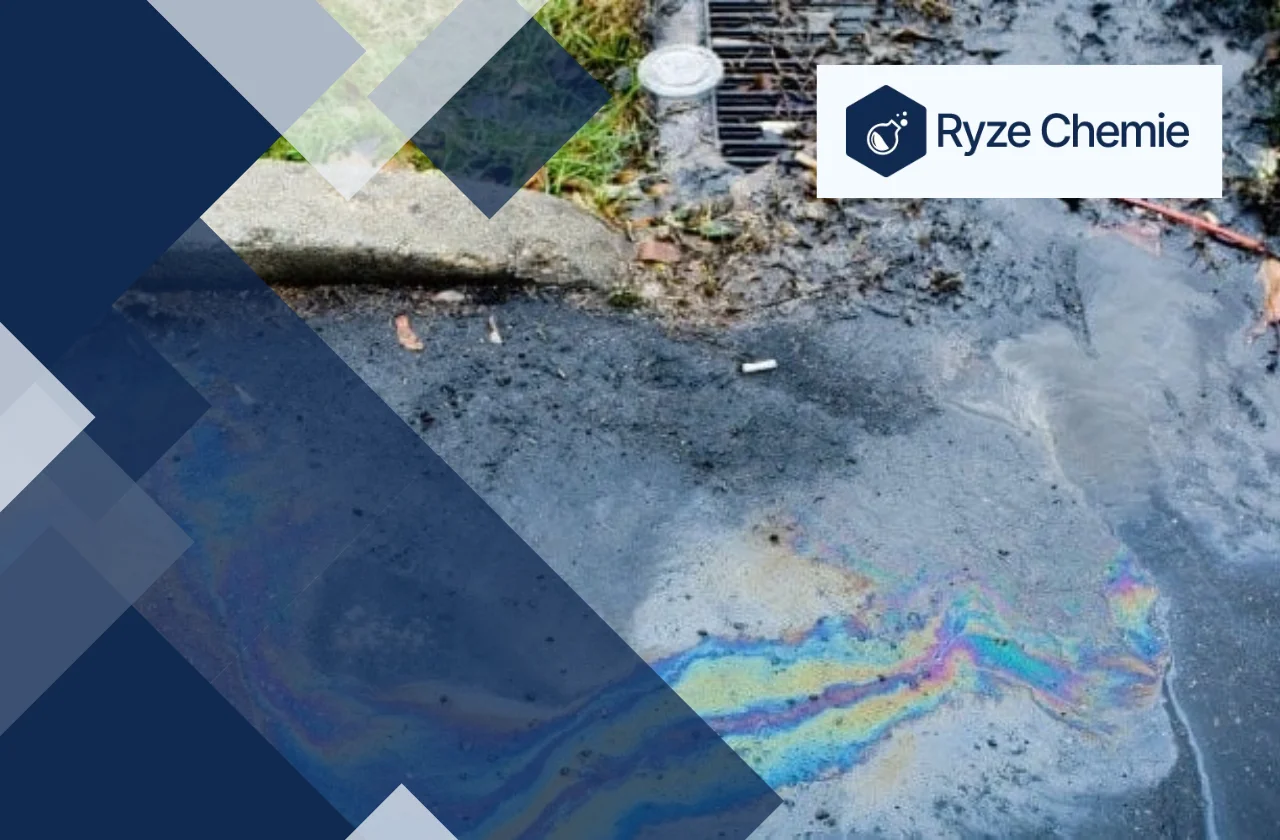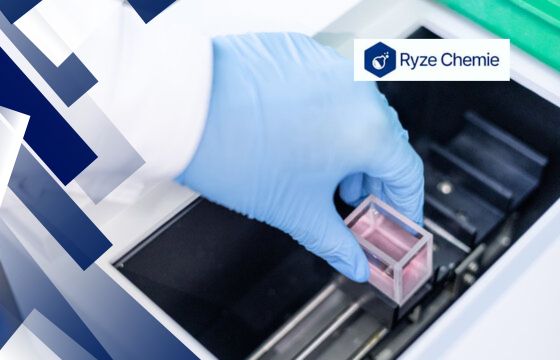
Stay up-to date on the
latest blogs. Join our
newsletter today!
This site is protected by reCAPTCHA and the Google Privacy Policy and Terms of Service apply.
Can You Pour Acetone Down The Drain?

9 mins read · May 08, 2024

Pouring acetone down the drain poses significant risks. Many laboratories confront this challenge. Personnel need clear guidance to handle this issue safely. Understandably, there's confusion and concern regarding proper disposal methods.
This article offers straightforward solutions. We'll explore the dangers of improper disposal, empathize with the challenges faced, and provide actionable steps for safe disposal.
By adhering to these guidelines, laboratory staff can mitigate environmental harm and ensure compliance with regulations. Let's delve into this critical issue and equip ourselves with the knowledge needed to protect our environment and community.
Understanding Acetone's Properties
Acetone is a risky and flammable liquid generally used as a solvent in laboratories. Its properties make it beneficial for diverse applications, but in addition – they pose dangers if now not dealt with properly. Understanding these properties is crucial for secure handling and disposal:
Chemical and Physical Properties
Chemical Formula: Acetone has the chemical formulation CH3COCH3. This structure functions as a carbonyl group (C=O) flanked through methyl groups (CH3).
Physical Characteristics: Acetone is a drab liquid at room temperature with a distinct, smelly odor. It is quite flammable with a flash point of -20°C. This means acetone vapors can ignite at this temperature or above with an ignition source.
Volatility: Acetone is an unstable liquid, meaning it evaporates readily at room temperature. This fast evaporation contributes to its strong smell and makes it beneficial for dissolving materials that need to dry quickly.
Miscibility: Acetone is miscible with water in all proportions. This particular property permits it to dissolve polar and nonpolar substances, making it a valuable solvent in diverse laboratory applications.
Solubility: Acetone dissolves many fats, oils, and waxes. This makes it beneficial for cleansing glassware, removing adhesives, and dissolving certain biological samples.
Effects on Plumbing Systems
Acetone's solvent properties can be adverse to plumbing structures if not dealt with properly. Here's how:
- Dissolving Plastics: Acetone can dissolve some kinds of plastics, specially PVC and certain acrylics. This can lead to weakened pipes, leaks, and potential structural harm.
- Weakening Metal: While not as excessive as with plastics, prolonged exposure to acetone can weaken metal pipes. This is due to the fact acetone can dissolve the protecting oxide layer on some metals, making them greater at risk of corrosion.
- Leaks and Blockages: Acetone can dissolve grease and buildup inside pipes. While to start with beneficial for cleansing, these dissolved substances can redeposit similarly down the road, causing blockages.
- Fumes and Fire Hazard: Acetone is very flammable. When disposed of down the drain, residual vapors can gather within the plumbing system, creating a fire threat.
However, pouring acetone down the drain can lead to detrimental consequences. Let's discover why it's a bad idea.
Why Pouring Acetone Down the Drain is a Bad Idea
Acetone is dangerous to the environment and can contaminate water sources if disposed of improperly. It's volatile nature also poses a risk of fire or explosion in sewer systems:
1) Safety Concerns
Acetone is a highly flammable liquid with a low flash point, meaning it can easily ignite with a spark or open flame. When poured down the drain, acetone vapors can travel through the plumbing system, accumulating in confined spaces. These vapors can create a serious fire hazard if ignited by a pilot light, water heater, or even static electricity.
The danger doesn't stop at fires. Sewage systems often contain a mixture of chemicals from various households and businesses. Acetone can react unpredictably with other chemicals present in the drain system, potentially generating toxic fumes or even explosions. Laboratory personnel understand the importance of safe chemical handling, and this extends to proper disposal methods to avoid unforeseen reactions.
2) Environmental Impact
Acetone is harmful to aquatic life. If released untreated into waterways through the sewage system, it can disrupt ecosystems and kill fish and other organisms. Even small amounts of acetone can have a negative impact on sensitive aquatic environments.
Furthermore, acetone can bioaccumulate in the food chain. This means that organisms lower on the food chain absorb acetone, and when they are eaten by larger predators, the concentration of acetone increases in the predator's body. Over time, this bioaccumulation can reach dangerous levels, harming the health of top predators.
3) Regulatory Considerations
Many regions have regulations regarding the disposal of hazardous waste. Acetone, due to its flammability and environmental impact, is often classified as hazardous waste. Improper disposal, including pouring it down the drain, can lead to fines and penalties for laboratories and personnel responsible for waste management.
Even if your specific location doesn't explicitly list acetone as hazardous waste, responsible disposal practices are still essential. Laboratories have a duty to protect the environment and ensure safe waste handling procedures.
To ensure safe disposal practices, let's explore some alternatives to pouring acetone down the drain.
Safe Alternatives for Acetone Disposal
There are several safe methods for disposing of acetone waste in the laboratory. These include using designated waste containers, recycling programs, and chemical treatment processes. Implementing these alternatives not only protects the environment but also ensures compliance with regulations:
Waste Collection and Disposal Services
When minimizing acetone usage isn't an option and disposal becomes necessary, consider licensed hazardous waste disposal companies. Here's how to ensure safe and compliant disposal:
- Identifying Licensed Disposal Companies: Look for companies with permits from your state environmental agency or the Environmental Protection Agency (EPA). These permits authorize them to handle hazardous waste like acetone. Online searches or contacting your local environmental agency can help locate licensed companies.
- Proper Containerization and Labeling: Acetone must be stored and transported in appropriate containers. Choose containers specifically designed for flammable liquids, typically made of metal or compatible plastic. Ensure the containers are in good condition and free of leaks or cracks. Label containers clearly with "Acetone" and the hazard warning "Flammable Liquid."
Important Note: When using a disposal company, follow their specific instructions regarding container types, volumes, and labeling requirements.
Solvent Recycling Programs
Solvent recycling programs offer an eco-friendly alternative to disposal. Here's how to explore these options:
- Internal Recycling Programs: Check within your laboratory or department for existing solvent recycling programs. These programs might involve distillation or other techniques to recover usable acetone from waste streams.
- External Recycling Programs: Investigate commercial companies specializing in solvent recycling. These companies collect used solvents, process them for reuse, and return them as a cleaner solvent. This option can be cost-effective and environmentally responsible.
The availability of internal or external recycling programs depends on your location and the volume of acetone waste generated.
Minimization Techniques
Minimizing acetone usage is the most effective way to reduce disposal needs. Here are key strategies:
- Planning Experiments: Carefully plan experiments to use the least amount of acetone necessary. Consider using smaller reaction scales or concentrating solutions before purification steps.
- Alternative Solvents: Evaluate the suitability of less hazardous solvents for specific applications. Consult safety data sheets (SDS) of potential alternatives to ensure compatibility with your experiment.
- Inert Atmosphere Techniques: For reactions sensitive to moisture or air, consider using inert atmosphere techniques like glove boxes or Schlenk lines. This reduces the need for large volumes of acetone for drying purposes.
Recovery and Reuse Techniques
In some cases, recovering or reusing acetone from waste streams might be possible. However, these techniques require specialized equipment and expertise. Here's a brief overview:
- Distillation: Distillation can separate acetone from non-volatile impurities. This recovered acetone can then be reused in suitable applications.
- Molecular Sieves: Molecular sieves can be used to remove water from acetone waste. This allows the dewatered acetone to be reused in moisture-sensitive reactions.
Important Note: Implementing recovery or reuse techniques requires careful consideration of safety hazards, cost-effectiveness, and potential for contamination. Always consult with a qualified chemist or safety professional before attempting these methods.
By employing a combination of these strategies – waste collection with licensed companies, solvent recycling programs whenever available, and minimization techniques in the lab – laboratory personnel can ensure safe and responsible management of leftover acetone. Remember, prioritizing minimization through proper planning and alternative solvents is the most sustainable approach.
Conclusion
In conclusion, pouring acetone down the drain is not recommended. Acetone can harm pipes and contaminate waterways. Proper disposal methods should be followed to prevent environmental damage and ensure workplace safety.
Options include using designated waste containers or consulting with a hazardous waste disposal service. It's essential to adhere to regulations and guidelines set forth by local authorities and environmental agencies.
By responsibly managing acetone disposal, laboratory personnel can mitigate potential risks and contribute to a safer working environment. Remember, protecting our environment and health is paramount when handling hazardous substances like acetone.
FAQs Related to Acetone Disposal
1) How do you get rid of acetone?
There are two main options for disposing of acetone:
- Licensed hazardous waste disposal facility: This is the preferred method for large quantities of acetone or contaminated acetone. Facilities have the expertise and equipment to handle hazardous materials safely and follow regulations.
- Evaporate small amounts: Small quantities of acetone (less than 5 liters) can be evaporated in a well-ventilated fume hood.
2) Where should acetone be disposed of?
Never pour acetone down the drain or dispose of it with regular trash. Acetone is flammable and can contaminate water sources.
- For small amounts: Use a fume hood for evaporation.
- For large amounts or contaminated acetone: Contact a licensed hazardous waste disposal company. They will advise on proper collection and transport procedures.
3) What happens if you put acetone in water?
Acetone readily mixes with water. While it doesn't cause a violent reaction, it can contaminate water sources. Disposing of acetone down the drain can pollute waterways and harm aquatic life.
4) What precautions should be taken when using and disposing of acetone?
- Always wear personal protective equipment (PPE) when handling acetone. This includes gloves, safety glasses, and a lab coat.
- Work in a well-ventilated area. Acetone vapors are flammable and can irritate the respiratory system.
- Keep acetone containers tightly sealed when not in use. This prevents evaporation and reduces the risk of spills.
- Label waste containers clearly as "Acetone Waste" and include the disposal date. This helps ensure proper handling by disposal personnel.
5) Can you let acetone evaporate?
Yes, small amounts of acetone (less than 5 liters) can be evaporated in a fume hood. The fume hood removes flammable vapors and protects personnel from harmful exposure.
- Never evaporate acetone outside of a fume hood. Open-air evaporation poses fire and inhalation risks.
- Do not leave it unattended while evaporating. Monitor the process to ensure complete evaporation.
Important Note: Local regulations may have specific requirements for acetone disposal. Always check with your institution's safety office or local environmental authorities for any additional guidelines.
Latest Blogs








